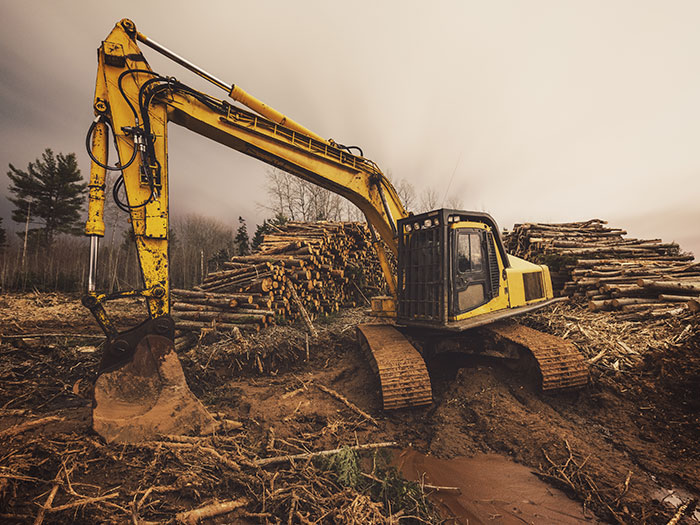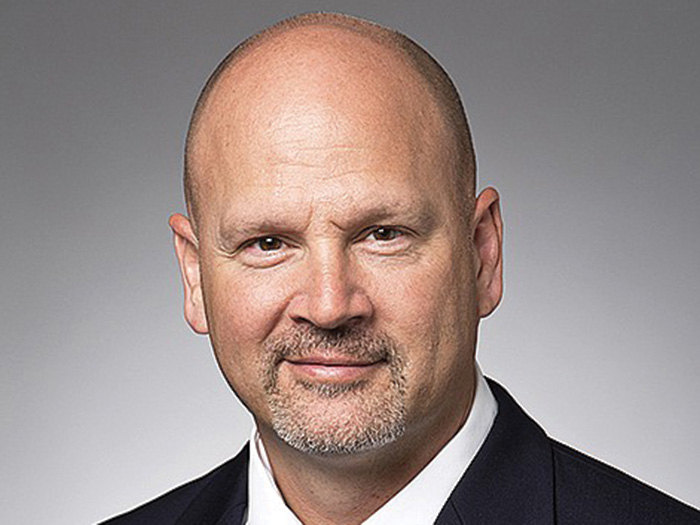Sponsored Content by Engle Martin
Manage Heavy Equipment Fire Risk to Reduce Costly Claims

Fighting something as swift and unpredictable as fire may seem like a losing battle, and indeed, fire is the second leading cause of loss for industries reliant on heavy equipment like mining, construction, marine cargo, logging and agriculture.
Heavy machinery relies on diesel fuel and/or hydraulic oil – liquids highly flammable under pressure — and in some cases process combustible material like wood chips, corn husks or other dried plant material. Together, they create a recipe for fast-moving flames.
To make matters worse, these machines tend to operate in areas not easily accessible by fire departments.
“Logging and agricultural equipment provide good examples of machinery operating in remote areas. There may not be any real roads leading to where the machine is, which impacts response time for the fire department,” said Blair Bennett, Senior Executive General Adjuster with Engle Martin & Associates, a national independent loss adjusting and claims management firm. “I’ve seen countless claims where the equipment is totally burnt to the ground by the time the fire department is able to get there.”
Tractors, excavators, boring machines and the like are expensive tools to replace. Heavy machinery typically comes equipped with hand-held extinguishers, but in most cases it’s too little too late. By the time an operator discovers there’s a problem, the small extinguisher is likely no match for a growing fire fed by the machine’s heat.
“There are specific types of fire, and each calls for a specific type of suppression,” Bennett said. The ability to distinguish classes of fire and deploy the proper solution can be the difference between a total loss and a minor repair.
Type of Fire Determines the Suppressant Needed

Blair Bennett, Senior Executive General Adjuster
The National Fire Protective Association categorizes fires as Class A, Class B or Class C, depending on what caused the combustion and what feeds the flame.
Class A fires are usually started from an accumulation of debris like insulation, upholstery or paper waste in tight areas of the equipment. If the material gets too close to a heat source, it can quickly ignite.
“This type of fire is very susceptible to heavy equipment working in the logging, agricultural and waste management industries,” Bennett said.
Class B fires involve diesel fuel, gas, grease or hydraulic oil. Hydraulic oil and diesel fuel on their own may not be very flammable, but can ignite easily under pressure and in the presence of another accelerant like gas. “These are what we call accelerator-driven fires,” Bennett said. “Hydraulic oils can operate between two and 10,000 pounds per square inch. A lot of these machines use as many metal lines as possible for high pressure hydraulic systems. Due to the nature of machines, their movements and how they work, there are still many areas of pressure that need to be considered,” he said.
Class C fires are electrical fires. Heavy equipment is heavily wired, and those wires are subject to some rough environments with vibrations, extreme temperatures and debris. Wiring can easily come loose, and just a small amount of friction against a metal component can send sparks flying.
The class of fire dictates what type of suppressant will be most effective. The two most common systems are single and dual fire suppression.
A single system uses only one type of suppression agent that may be a powder or a liquid. They tend to be cheaper to produce and install and are suitable for Class A fires without an accelerant.
A dual system utilizes tanks that suppress with both liquid and dry chemical agents, which is useful for Class B fires. The dry suppressant will extinguish the flames, while the liquid component cools down the heat source.
“If you don’t address the heat source, the fire will re-flash and return. In order to attack the fire from both angles, you need to put the fire out from the hydraulic fuel and also be able to cool down the components that can reignite, such as the heater, muffler or any moving parts that have generated frictional heat,” Bennett said.
Class C, or electrical fires, require a special type of pattern extinguisher that can illuminate the fire and spray suppression materials more strategically to avoid causing more damage or shorting.
“One thing to keep in mind is that both Class A combustion and Class C combustion can also turn into a Class B combustion if the flames travel to a hydraulic or fuel line,” Bennet said. “Therefore, a sophisticated suppression system is the best way to extinguish a fire quickly.”
Weighing the Cost and Benefits of Suppression Systems
Despite the effectiveness of fire suppression solutions, cost remains a barrier. Suppression systems generally do not come factory-installed, and operators wishing to implement such a system must have one custom-built for each particular machine.
“Each system has to be custom-designed based on the location of the heat source. It would entail detectors in various areas, multiple lengths of tubing and different locations for nozzles,” Bennett said. “I think in the future we will see more companies either having their own proprietary system or offering factory installation of the equipment.”
The systems can range from a few thousand dollars to well over $10,000 depending on how many tubes and nozzles are needed and the size of the tanks containing the fire suppressants. Vehicle owners and operators must decide whether that investment is worthwhile.
“If a company has a wheel loader valued at $50,000, it might not make sense to put $10,000 worth of improvements on it,” Bennett said. “But from an underwriting standpoint, fire suppression systems would be a way to reduce risk and lower premiums.”
Rely on Industry Expertise
Luckily, there are other simpler and less expensive ways to mitigate fire risk.
“A lot of heavy equipment fires can be eliminated with daily maintenance and cleaning. A responsible company will inspect each machine every day to ensure they are clear of combustible debris and that there are no leaking fuel lines or frayed wires,” Bennett said.
A skilled adjuster can help operators identify possible fire hazards not always obvious at first glance. A hole may not be visible, but often a gray or discolored hose indicates something is off. Belly pans that protect the engine and transmission should be kept clear — even a small buildup of waste can serve as kindling. For companies that do choose to install a fire suppression system, bi-annual inspections are necessary to keep them in top order.
“Operator education is also critical,” Bennett said. “In addition to proper inspections, operators should be trained in how to respond to a fire. Knowing what steps to take to protect yourself and the machine can minimize the damage.”
With experience in both marine and commercial property insurance, Engle Martin’s Specialty Marine & Transportation group can identify areas where an equipment owner is most exposed, either due to coverage gaps created by exclusions, or due to poor loss histories that limit their coverage options.
“We can handle anything from full adjustments involving complex claims to basic appraisals,” Bennett said.
To learn more, visit https://www.englemartin.com/loss-adjusting/inland-marine/.
This article was produced by the R&I Brand Studio, a unit of the advertising department of Risk & Insurance, in collaboration with Engle Martin & Associates. The editorial staff of Risk & Insurance had no role in its preparation.









